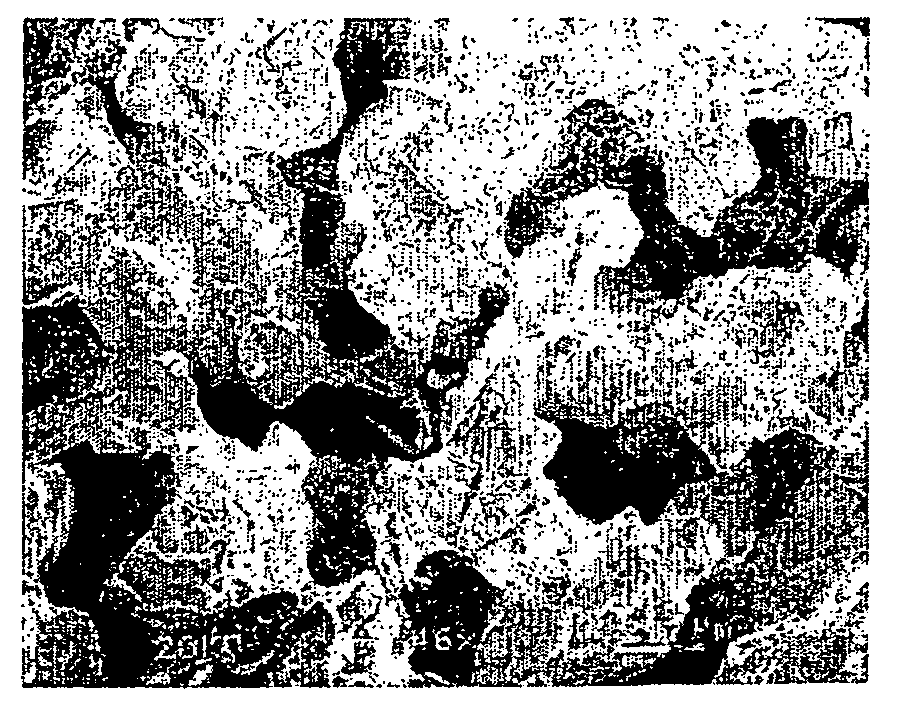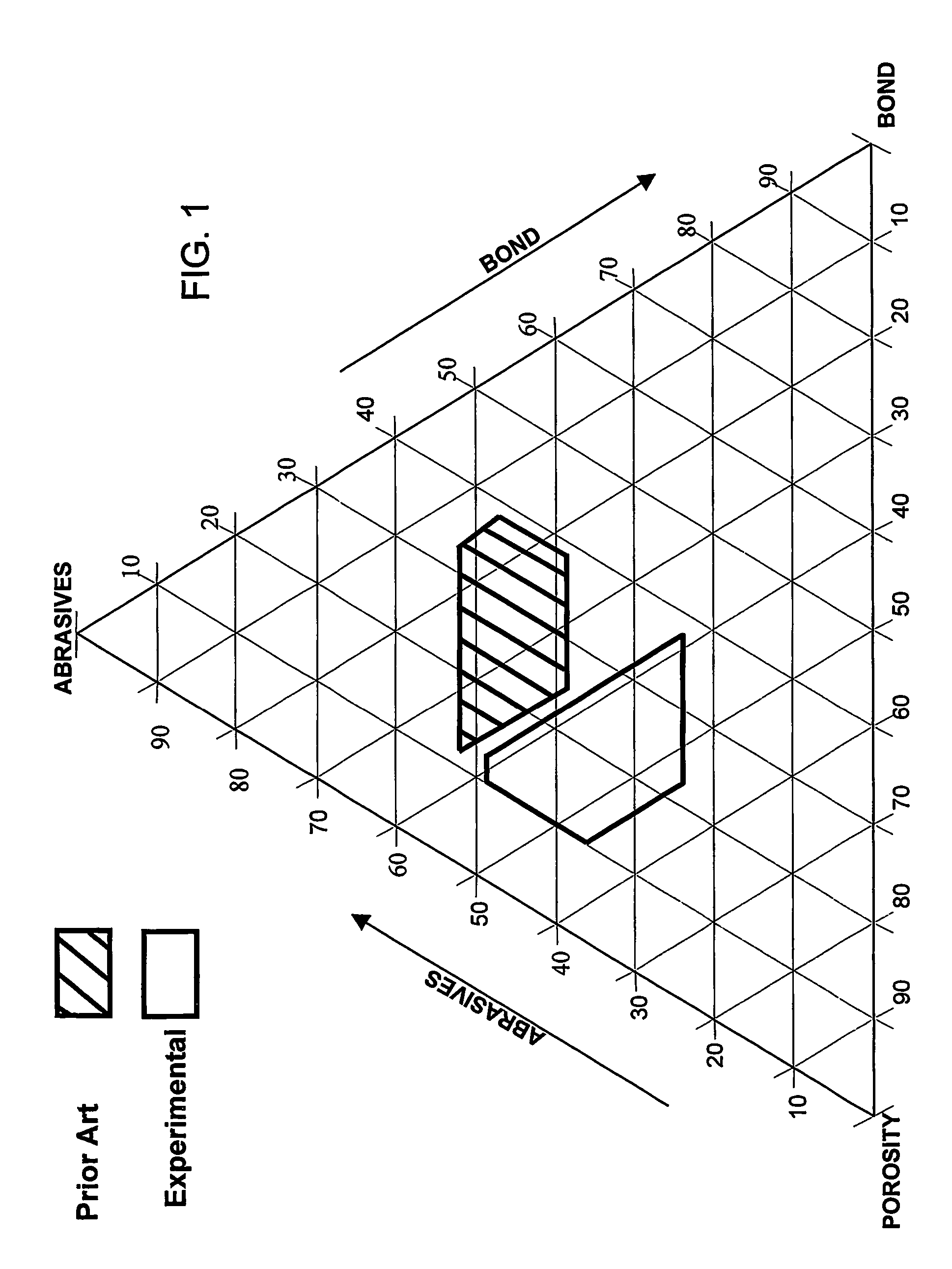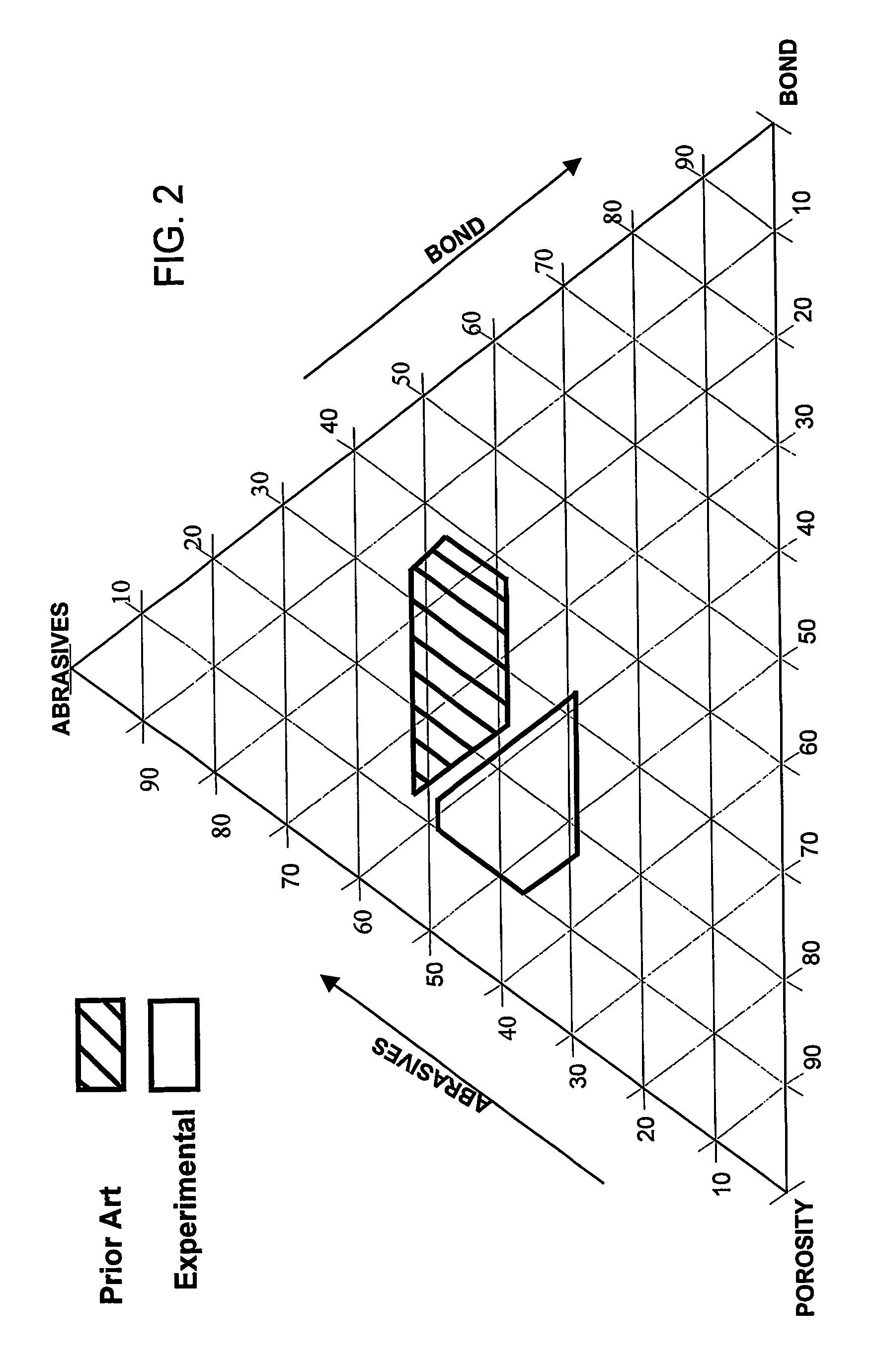Abrasive articles with novel structures and methods for grinding
a technology of bonded abrasives and novel structures, applied in the direction of grinding devices, manufacturing tools, other chemical processes, etc., can solve the problems of increased grinding force, increased grinding force, and increased risk of thermal damage, and the tendency of organic bond materials to slump or stratify
- Summary
- Abstract
- Description
- Claims
- Application Information
AI Technical Summary
Benefits of technology
Problems solved by technology
Method used
Image
Examples
example 1
[0134]A series of agglomerated abrasive grain samples containing inorganic binding materials were prepared in a rotary calcination apparatus (electric fired model #HOU-5D34-RT-28, 1,200° C. maximum temperature, 30 KW input, equipped with a 72″ (183 cm) long, 5.5″ (14 cm) inner diameter refractory metal tube, manufactured by Harper International, Buffalo, N.Y.). The refractory metal tube was replaced with a silicon carbide tube of the same dimensions, and the apparatus was modified to operate at a maximum temperature of 1,550° C. The process of agglomeration was carried out under atmospheric conditions, at a hot zone temperature control set point of 1,180° C., with an apparatus tube rotation rate of 9 rpm, a tube incline angle of 2.5 to 3 degrees, and a material feedrate of 6-10 kg / hour. The yield of usable free-flowing granules (defined as −12 mesh to pan) was 60 to 90% of the total weight of the feedstock before calcination.
[0135]The agglomerate samples were made from a simple mixt...
example 2
Abrasive Grain / Inorganic Binder Material Agglomerates
[0148]Vitrified binding materials were used to make agglomerated abrasive grain samples AV2 and AV3. The agglomerates were prepared according to the rotary calcination method described in Example 1, using the materials described below. The AV2 agglomerates were made with 3 wt. % A Binding material (Table 1-2). The calciner temperature was set at 1250° C., the tube angle was 2.5 degrees and the rotation speed was 5 rpm. The AV3 agglomerates were made with 6 wt. % E Binding material (Table 1-2), at a calciner temperature of 1200° C., with a tube angle of 2.5-4° and a rotation speed of 5 rpm. The abrasive grain was a fused alumina 38A abrasive grain, 80 grit size, obtained from Saint-Gobain Ceramics & Plastics, Inc., Worcester, Mass., USA.
[0149]The vitrified grain agglomerates were tested for loose packing density, relative density and size. Test results are listed in Table 2-1 below. Agglomerates consisted of a plurality of individu...
example 3
[0155]The experimental wheels of Example 2 were tested in a simulated roll grinding test in comparison with commercially available wheels bonded with phenolic resin (C-1-C-3, obtained from Saint-Gobain Abrasives, Inc., Worcester, Mass.). Shellac bonded wheels prepared in the laboratory (C-4 and C-5) from a shellac resin blend also were tested as comparative wheels. Comparative wheels were selected because they had compositions, structures and physical properties equivalent to those wheels used in commercial roll grinding operations.
[0156]To simulate roll grinding in a laboratory setting, a continuous contact slot grinding operation was conducted on a surface grinding machine. The following grinding conditions were employed in the tests.[0157]Grinding machine: Brown & Sharpe surface grinder[0158]Mode: two continuous contact slot grinds, reversal at end of stroke prior to loss of contact with workpiece[0159]Coolant: Trim Clear 1:40 ratio coolant:deionized water[0160]Workpiece: 16×4 in...
PUM
| Property | Measurement | Unit |
|---|---|---|
| volume percent | aaaaa | aaaaa |
| volume percentages | aaaaa | aaaaa |
| interconnected porosity | aaaaa | aaaaa |
Abstract
Description
Claims
Application Information
 Login to View More
Login to View More - R&D
- Intellectual Property
- Life Sciences
- Materials
- Tech Scout
- Unparalleled Data Quality
- Higher Quality Content
- 60% Fewer Hallucinations
Browse by: Latest US Patents, China's latest patents, Technical Efficacy Thesaurus, Application Domain, Technology Topic, Popular Technical Reports.
© 2025 PatSnap. All rights reserved.Legal|Privacy policy|Modern Slavery Act Transparency Statement|Sitemap|About US| Contact US: help@patsnap.com



